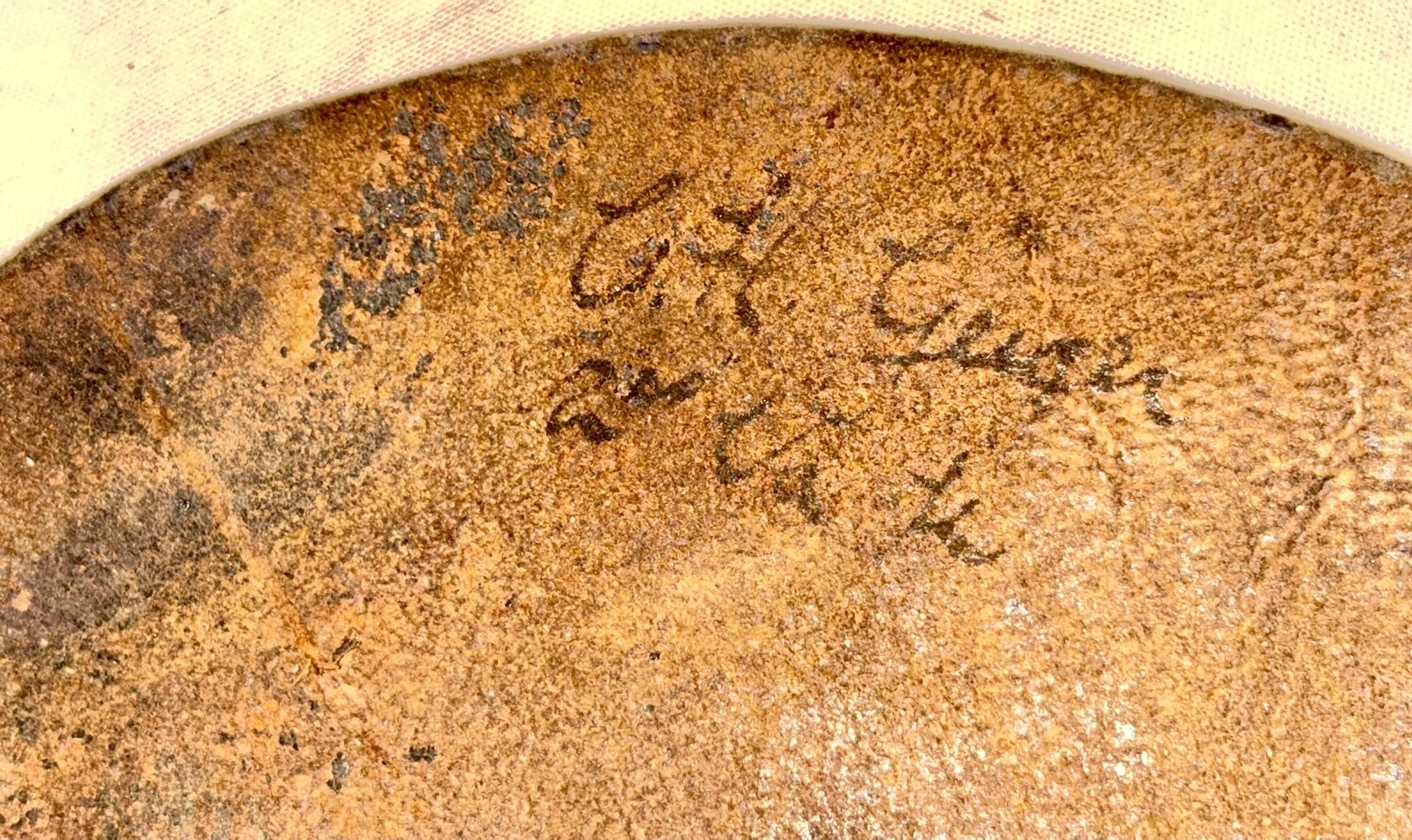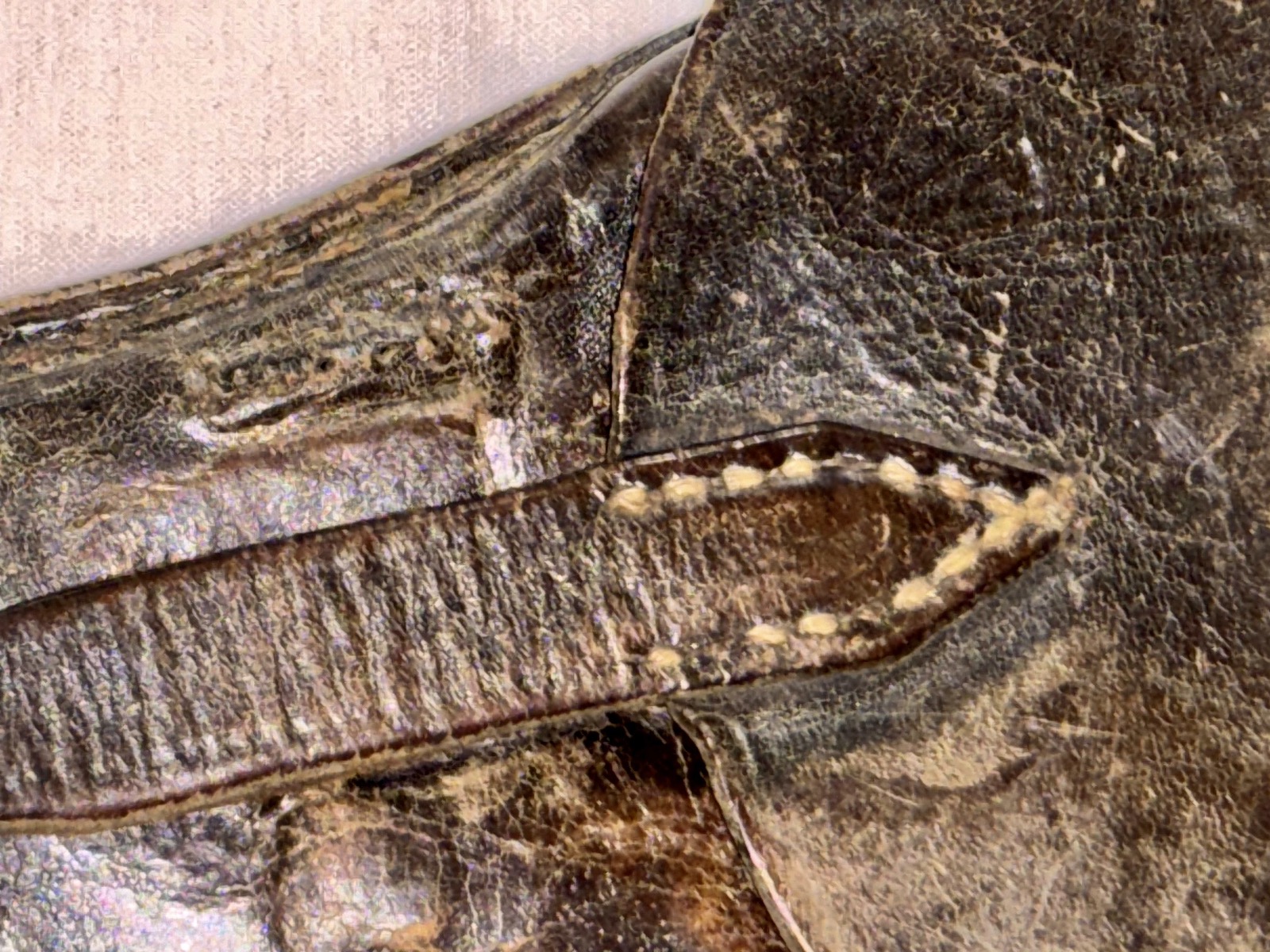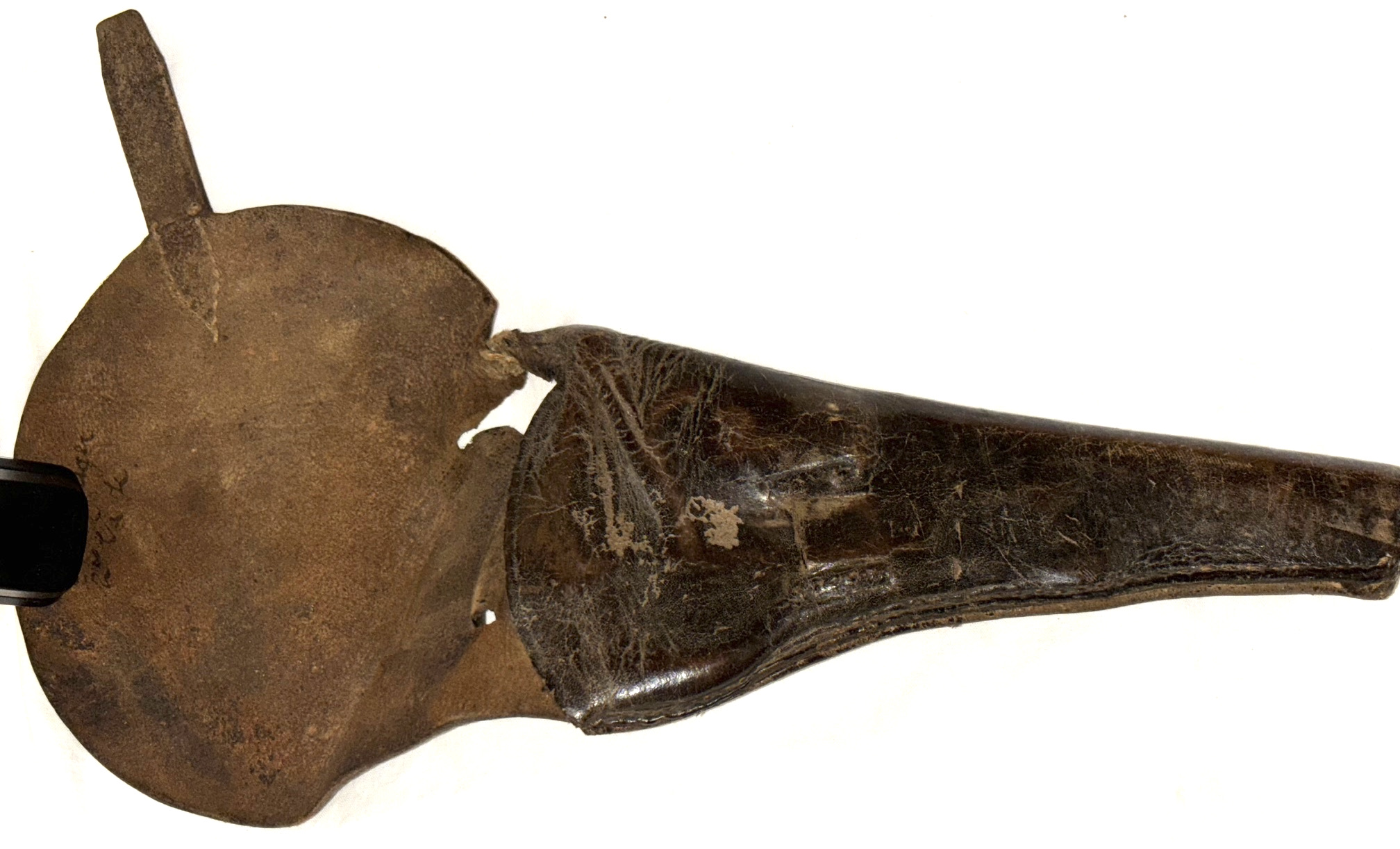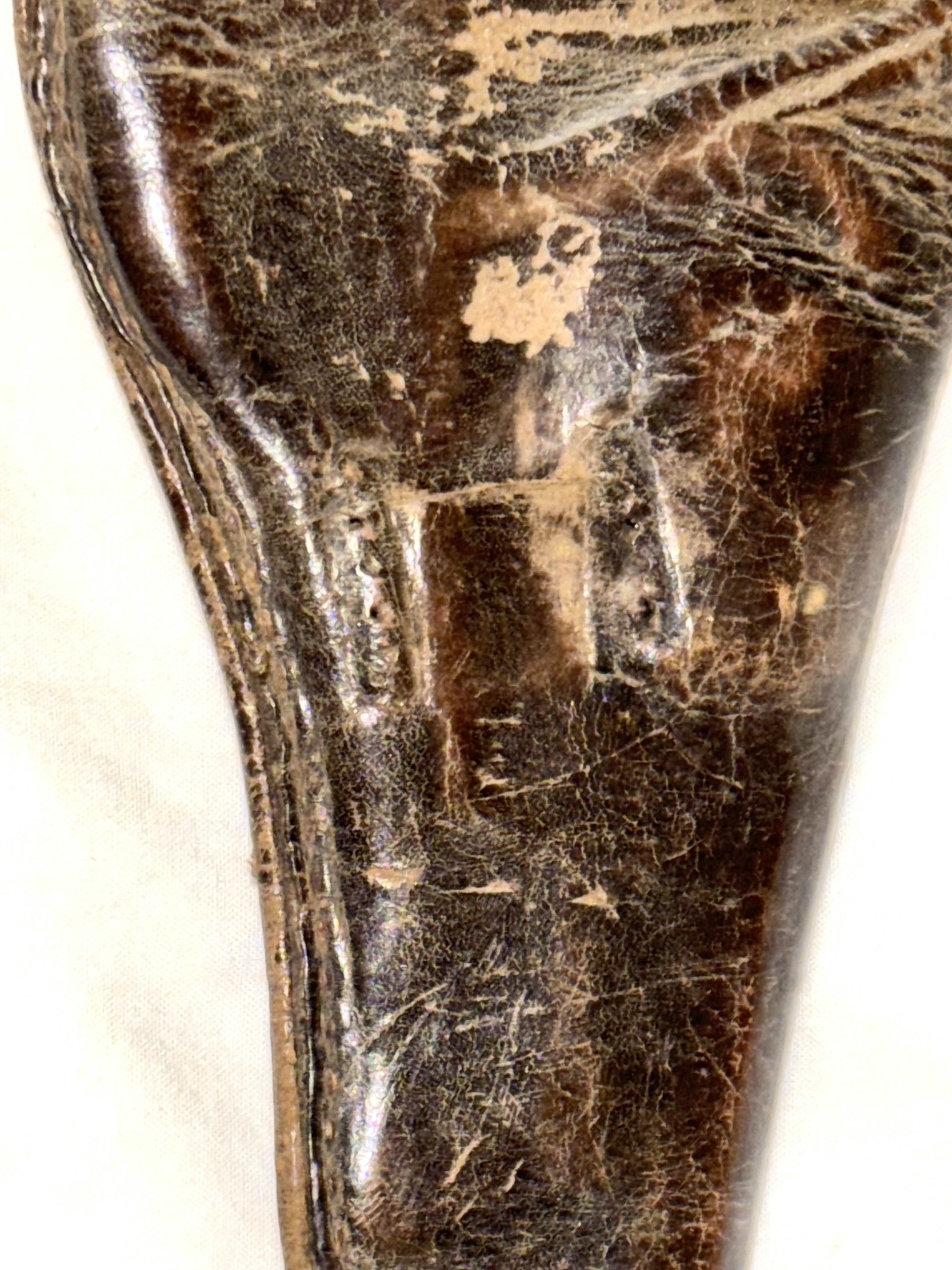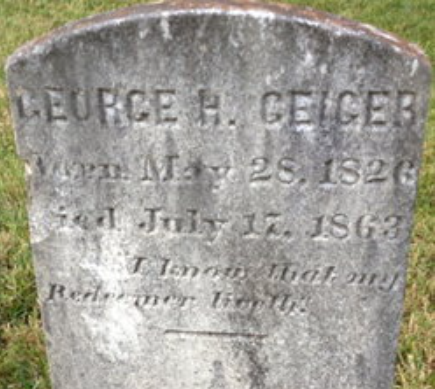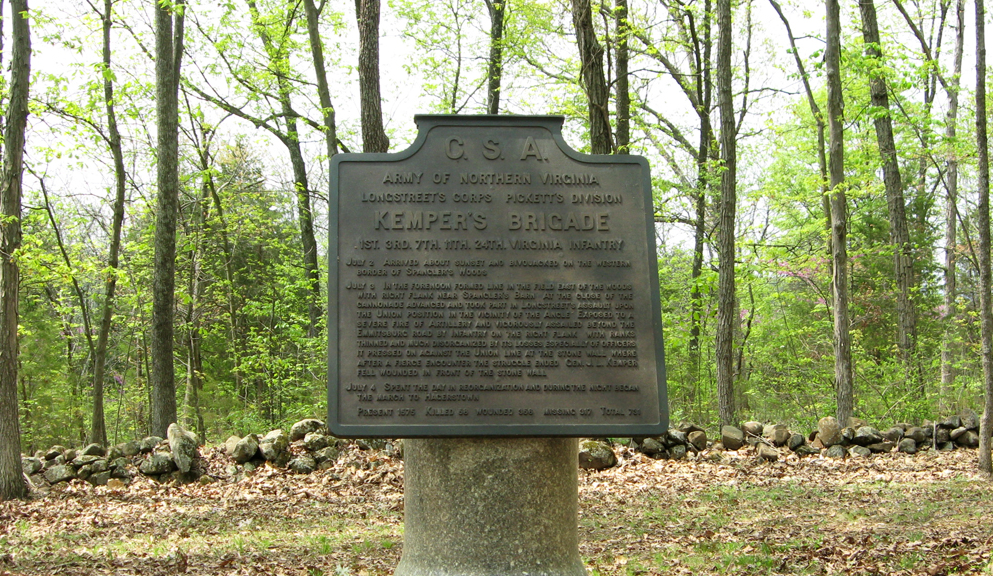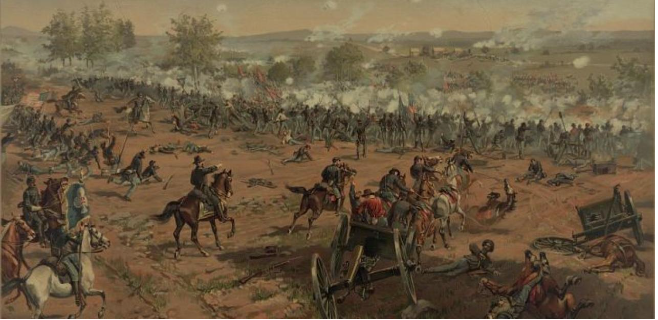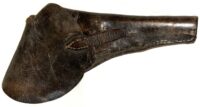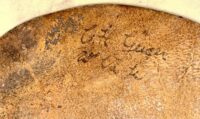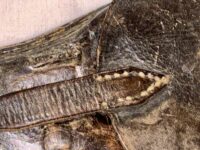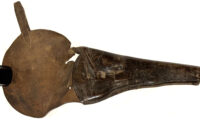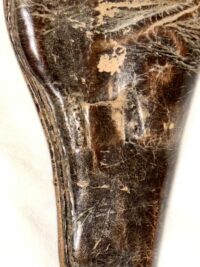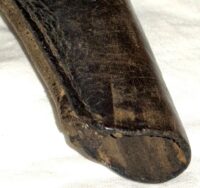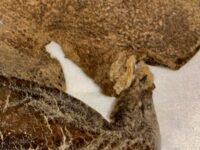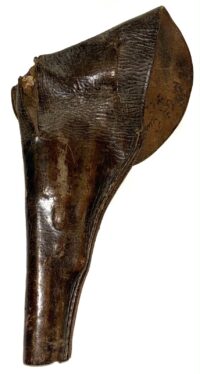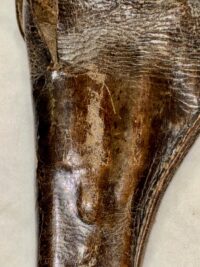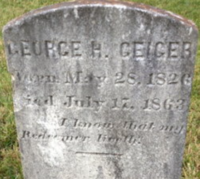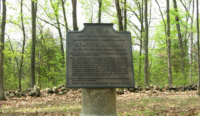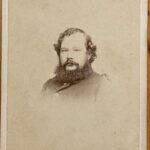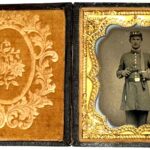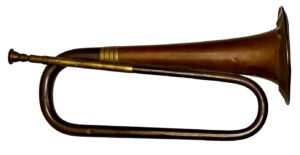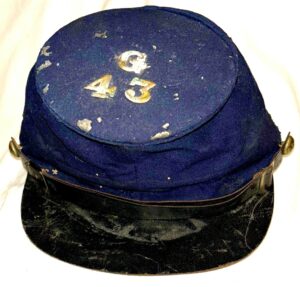Id’d Confederate Holster – Captain George Henry Geiger, Jr. Co. K 2nd Va. Cavalry and Aide to General Kemper – Mortally Wounded at Gettysburg during Pickett’s Charge on July 3, 1863
SOLD
Id’d Confederate Holster – Captain George Henry Geiger, Jr. Co. K 2nd Va. Cavalry and Aide to General Kemper – Mortally Wounded at Gettysburg during Pickett’s Charge on July 3, 1863 – This well-constructed, and historically significant, Confederate holster obviously held (from the visible impression contours) a medium size revolver, perhaps a Colt M1849 Pocket Revolver. The leather is the typical, Confederate, russet brown leather, unlike the Federal holsters which were predominantly made of black lacquered, bridle leather. The holster retains a smooth, almost “polished” finish to the exterior. The flap closure tab is sewn to the flap in a typical Confederate mode or shape and slips into a modest loop, sewn to the front of the holster. There are no belt loops, but the belt would have slipped through two slits cut into the back of the holster. There is a field repair, from the period of use, where the revolver’s hammer created a small tear in the flap; the tear was partially closed or repaired with some period twine. Overall, the holster remains in very good condition.
Inked in the upper side of the flap’s interior is the following inscription:
“G.H. Geiger
2nd Va Cav”
George Henry Geiger, from a well-to-do family in Albemarle County, Virginia; he had been a student, in the mid-1840s, at the University of Virginia; his occupation in the antebellum period, just prior to the onset of the war, is listed as planter. Geiger enlisted, as a 3rd Lt., on May 11, 1861, in Co. K of the 2nd Virginia Cavalry. He would later be elected to the rank of 2nd Lt. and promoted to 1st Lt. in April, 1862; in November, 1862, Geiger was promoted to the rank of Captain and became the Aide-de-Camp to Confederate General James L. Kemper. Captain Geiger would serve with the 2nd Va. Cavalry throughout his service. At Gettysburg, the 2nd Virginia Cavalry, as an element of Kemper’s command, would be highly engaged participants, on July 3, 1863, in Pickett’s Charge. Geiger, during the assault on Federal troops, after crossing the Emmitsburg Road, was severely wounded and taken prisoner; he was carried to a Union hospital where he lingered for several days, finally succumbing to his wounds on July 17, 1863. Ultimately, he would be buried at Grace Episcopal Church in Albemarle County, Virginia.
The holster measures about 10.5” in length.
George Henry Geiger
| Residence Albemarle County VA; a 34 year-old Planter.
Enlisted on 5/11/1861 at Charlottesville, VA as a 3rd Lieut. On 5/11/1861 he was commissioned into “K” Co. VA 2nd Cavalry He died wounds POW on 7/17/1863 at Gettysburg, PA (Died in hospital) He was listed as: * On rolls 12/15/1861 (place not stated) (Present, sick) * Detailed 10/3/1862 (place not stated) (To Court martial duty) * POW 7/3/1863 Gettysburg, PA * Wounded 7/3/1863 Gettysburg, PA Promotions: * 2nd Lieut 7/1/1861 (Elected) * 1st Lieut 4/25/1862 * Capt 11/15/1862 (Aide-de-Camp to Gen Kemper) Other Information: born 5/28/1826 in Staunton, VA Buried: Grace Episcopal Church, Albemarle Co, VA (Attended Univ of VA 1846-47) |
Gen. Kemper’s brigade was one of the central assault units in Pickett’s Charge, advancing on the right flank of Pickett’s line. After crossing Emmitsburg Road, the brigade was hit by flanking fire from two Vermont regiments, driving it to the left and disrupting the cohesion of the assault. The monument to Kemper’s Brigade of the Army of Northern Virginia is southwest of Gettysburg on the west side of West Confederate Avenue.
Kemper’s Brigade was the right flank brigade of Pickett’s Charge and suffered heavy casualties not only from Union defenders in their front but also from the Vermont Brigade which swung out from the Union line and attacked their flank after they crossed Emmitsburg Road.
From the Gettysburg monument:
Army of Northern Virginia
Longstreet’s CorpsPickett’s Division
Kemper’s Brigade
1st 3rd 7th 11th 24th Virginia Infantry
July 2. Arrived about sunset and bivouacked on the western border of Spangler’s Woods.
July 3. In the forenoon formed line in the field east of the woods with right flank near Spangler’s Barn. At the close of the cannonade advanced and took part in Longstreet’s assault upon the Union position in the vicinity of the Angle. Exposed to a severe fire of artillery and vigorously assailed beyond the Emmitsburg Road by infantry on the right flank with ranks thinned and much disorganized by its losses especially of officers it pressed on against the Union line at the stone wall where after a fierce encounter the struggle ended. Gen. J. L. Kemper fell wounded in front of the stone wall.
July 4. Spent the day in reorganization and during the night began the march to Hagerstown.
Present 1575 Killed 56 Wounded 356 Missing 317 Total 731
George Henry Geiger Jr
1826–1863
Birth 28 MAY 1826 • Staunton, Virginia, USA
Death 17 JUL 1863 • Gettysburg, Adams, Pennsylvania, USA
| Name: | George Henry Geiger |
| Enlistment Age: | 34 |
| Birth Date: | 28 May 1826 |
| Birth Place: | Staunton, Virginia |
| Enlistment Date: | 11 May 1861 |
| Enlistment Place: | Charlottesville, Virginia |
| Enlistment Rank: | 3rd Lieut |
| Muster Date: | 11 May 1861 |
| Muster Place: | Virginia |
| Muster Company: | K |
| Muster Regiment: | 2nd Cavalry |
| Muster Regiment Type: | Cavalry |
| Muster Information: | Commission |
| Rank Change Date: | 1 Jul 1861 |
| Rank Change Rank: | 2nd Lieutenant |
| Rank Change Information: | Elected |
| Imprisonment Date: | 3 Jul 1863 |
| Imprisonment Place: | Gettysburg, Pennsylvania |
| Casualty Date: | 3 Jul 1863 |
| Casualty Place: | Gettysburg, Pennsylvania |
| Type of Casualty: | Wounded |
| Muster Out Date: | 17 Jul 1863 |
| Muster Out Place: | Gettysburg, Pennsylvania |
| Muster Out Information: | died wounds POW |
| Side of War: | Confederacy |
| Survived War ?: | No |
| Residence Place: | Albemarle County, Virginia |
| Burial Place: | Grace Episcopal Church, Albemarle Co, Virginia |
| Occupation: | Planter
|
George is the biological son of George H. Geiger Sr. and Susannah Tapp. His mother died a few days after his birth and he was raised by his uncle, Henry J. Tapp (1795–1830), and his wife, Frances Gambill (who was the niece of Susannah). Henry died in 1830 and Fannie married Peter M. Meriwether in 1836 and they supposedly adopted George.
He died of wounds suffered during the fighting at Gettysburg. He died of wounds suffered during the fighting at Gettysburg.
2nd VA Cavalry
| Organized: on 5/11/61 Mustered Out: 4/10/65 |
| From | To | Brigade | Division | Corps | Army | Comment |
| Jul ’61 | Jul ’61 | Cavalry | Army of Potomac | |||
| Jul ’61 | Sep ’61 | Cavalry | 1st | Army of Potomac | ||
| Sep ’61 | Nov ’61 | Cavalry | Army of Potomac | |||
| Nov ’61 | Mar ’62 | Cavalry | Potomac District | Dept of Northern Virginia | ||
| Jan ’62 | Jan ’62 | Cavalry | Forces at Leesburg, VA | Potomac District | Dept of Northern Virginia | 4 companies |
| Mar ’62 | May ’62 | Cavalry | Ewell’s | Dept of Northern Virginia | ||
| May ’62 | Jun ’62 | Cavalry | Ewell’s | Valley District | Dept of Northern Virginia | |
| Jun ’62 | Jun ’62 | Cavalry | Valley District | Dept of Northern Virginia | ||
| Aug ’62 | Nov ’62 | Robertson’s | Cavalry | Army of Northern Virginia | ||
| Nov ’62 | Sep ’63 | Fitz. Lee’s | Cavalry | Army of Northern Virginia | ||
| Sep ’63 | Jul ’64 | Wickham’s | Fitz. Lee’s | Cavalry | Army of Northern Virginia | |
| Aug ’64 | Jan ’65 | Wickham’s | Fitz. Lee’s/Rosser’s | Valley District | Dept of Northern Virginia | |
| Feb ’65 | Apr ’65 | Wickham’s/Mumford’s | Fitz. Lee’s | Cavalry | Army of Northern Virginia |
2nd Regiment, Virginia Cavalry
Overview:
2nd Cavalry Regiment completed its organization at Lynchburg, Virginia, in May, 1861. Its companies were recruited in the counties of Bedford, Campbell, Botetourt, Amherst, Franklin, Appomattox, and Albemarle. Until the end of October the unit was called the 30th Regiment Virginia Volunteers. During the war it was brigaded under Generals B.H. Robertson, F. Lee, Wickham, and Munford. The 2nd Cavalry saw action at First Manassas, in Jackson’s Valley Campaign, and at Groveton Heights, Sharpsburg, Fredericksburg, Kelly’s Ford, Chancellorsville, Brandy Station, Aldie, Upperville, Gettysburg, and Shepherdstown. After the Bristoe and Mine Run campaigns, it was involved at The Wilderness, Todd’s Tavern, Spotsylvania, Haw’s Shop, and Cold Harbor. It fought in the Shenandoah Valley with Early and later in numerous conflicts around Petersburg and Appomattox. The regiment contained 676 men in July, 1861, lost twenty-eight percent of the 163 engaged at Groveton Heights, and of the 385 at Gettysburg about four percent were disabled. At Appomattox it cut through the Federal lines and disbanded at Lynchburg on April 10, 1865. However, 19 men were included in the surrender. The field officers were Colonels Thomas T. Munford and Richard C.W. Radford, Lieutenant Colonels Cary Breckinridge and James W. Watts, and Major William F. Graves.
2nd Virginia Cavalry Regiment
| 2nd Virginia Cavalry Regiment | |
| Active | May 1861 – April 1865 |
| Disbanded | April 1865 |
| Allegiance | Confederate States of America |
| Branch | Confederate States Army |
| Type | Regiment |
| Role | Cavalry |
| Engagements | First Battle of Manassas Jackson’s Valley Campaign Seven Days’ Battles Second Battle of Manassas Battle of Sharpsburg Battle of Fredericksburg Battle of Chancellorsville Battle of Brandy Station Battle of Gettysburg Bristoe Campaign Overland Campaign Siege of Petersburg Valley Campaigns of 1864 Appomattox Campaign Battle of Five Forks |
| Commanders | |
| Notable commanders |
Col. Richard C.W. Radford Col. Thomas T. Munford |
Private Peter H. Bird of Co. D, 2nd Virginia Cavalry Regiment
The 2nd Virginia Cavalry Regiment was a cavalry regiment raised in Virginia for service in the Confederate States Army during the American Civil War. It fought mostly with the Army of Northern Virginia.
The unit was organized by Colonel Jubal Early in Lynchburg, Virginia, in May, 1861 as the 30th Virginia Volunteer Regiment under Col. Richard C.W. Radford (whence “Radford’s Rangers”—not to be confused with Troop G’s similar nickname). Its troops (the cavalry equivalent of infantry companies) were recruited across several counties of Central Virginia:
| Troop: Nickname | Captain | Mustered |
| A: Bedford’s “Clay Dragoons” | William R. Terry | 11 May 1861 |
| B: Lynchburg’s “Wise Troop”[1] | John S. Langhorne | 13 May 1861 |
| C: “The Botetourt Dragoons” | Andrew L. Pitzer | 20 May 1861 |
| D: “The Franklin Rangers” | Giles W.B. Hale | 22 May 1861 |
| E: “The Amherst Mounted Rangers” | Thomas Whitehead | 29 May 1861 |
| F: “The Bedford Southside Dragoons” | James Wilson | 31 May 1861 |
| G: Bedford’s “Radford Rangers” | Edmund W. Radford | 29 May 1861 |
| H: “The Appomattox Rangers” | Joel L. Flood | 3 June 1861 |
| I: “The Campbell Rangers” | John D. Alexander | 8 June 1861 |
| K: “The Albemarle Light Horse” | Eugene Davis | 11 May 1861 |
At the end of October, 1861 the unit was re-designated the 2nd Virginia Cavalry Regiment.
During the war it was brigaded under Generals B.H. Robertson, Fitzhugh Lee, W.C. Wickham, and Thomas Munford. The 2nd Cavalry saw action at First Bull Run, in Jackson’s Valley Campaign, and at Second Bull Run, Mile Hill, Antietam, Fredericksburg, Kelly’s Ford, Chancellorsville, Brandy Station, Aldie, Upperville, Gettysburg, and Shepherdstown. After the Bristoe and Mine Run campaigns, it was involved at The Wilderness, Todd’s Tavern, Spotsylvania, Haw’s Shop, and Cold Harbor. It fought in the Shenandoah Valley with Jubal Early and later in numerous conflicts around Petersburg and Appomattox.
The regiment contained 676 men in July, 1861, lost twenty-eight percent of the 163 engaged at Groveton Heights, and of the 385 at Gettysburg about four percent were disabled. At Appomattox it cut through the Federal lines and disbanded at Lynchburg on April 10, 1865. However, 19 men were included in the surrender.
The field officers were Colonels Richard C.W. Radford and Thomas T. Munford, Lieutenant Colonels Cary Breckinridge and James W. Watts, and Major William F. Graves.[3]
Future Commonwealth’s Attorney and Virginia Bar Association President Micajah Woods enlisted in the 2nd Virginia Cavalry. Woods was the prosecuting attorney in the trial of Charlottesville mayor J. Samuel McCue, the last man to be hanged in Virginia.
Thomas Whitehead, the future one-term Representative of Virginia’s 6th Congressional District to the House of Representatives, was the captain of Company E.
The flag of the Botetourt Dragoons was conserved by the United Daughters of the Confederacy Chapter 797 when it was listed as one of the top 12 flags needing conservation at the Museum of the Confederacy. The flag was constructed in 1861 when the Fincastle, Virginia unit rode off to war. The silk flag was used by the unit for two years, and the flag bearer, Rufus H. Peck, presented the flag to the Museum of the Confederacy in 1907
2nd Virginia Cavalry Regiment
Of the original 700 members of the 30th Virginia Volunteer Regiment 50 officers and 502 enlisted men were killed or wounded, 89 died of accidents or disease and 75 were captured. Including later recruits 1,500 men served in the 2nd Virginia Cavalry in the Civil War.
| 1861 | |
| May 8 | Organized at Lynchburg as the 30th Virginia Volunteer Regiment under the command of Colonel Richard C.W. Radford (West Point Class of 1845), Lieutenant Colonel Thomas Taylor Munford, and Major J.S. Langhorne. Recruited in Albemarle, Amherst, Appomattox, Bedford, Botetourt, Campbell and Franklin counties.
Company A – Clay Dragoons, Captain William R. Terry |
| May 11 | Company K moved to Manassas Junction, arriving in the evening. |
| May 22 | Companies C & D moved to Milford Mills, on Broad Run near Manassas. |
| June 3 | Companies A & B moved to Manassas Junction under Captain W.R. Terrry. |
| June | Companies E,F,G,H & I moved to Milford Mills, on Broad Run near Manassas. |
| June 10 | Companies A & B arrived at Milford Mills, on Broad Run near Manassas. |
| June 11-15 | Companies A & B moved to Centreville. |
| June 15 | Company K moved to Payne’s Store near Occoquan. |
| June 16 | Company A and part of Company B under Captain Terry moved to Frying Pan Church in Fairfax County on a reconnaissance to the Potomac River. |
| June 17 |
Fairfax Court HouseCompany A and part of Company B continued their reconnaissance to Great Falls, then returned to Dranesville after destroying the railroad station and water tank in Vienna. In the evening they skirmished with Federal forces before returning to Centreville the next morning. |
| June 25 | Companies C & D moved to Fairfax Court House under the command of Lieutenant Colonel Thomas T. Munford, |
| June 30 | Companies E,F,G,H & I moved to Fairfax Court House under the command of Colonel Radford. Company A was at Frying Pan Church, Company B near Centreville, and Company K at Payne’s Store. |
| July 17 | Companies A & I were at Frying Pan Church, Company B near Centreville, Companies C,E,G & H at Camp Radford near Fairfax Court House, Company D at Leesburg, Company F at Farr’s Crossroads, and COmpany K at Camp Scott near Occoquan.
Companies C, G & H withdrew to Mitchell’s Ford on Bull Run, arriving the next morning. Company B withdrew to Lewis’ Ford on Bull Run. |
| July 21 |
Battle of Manassas (Bull Run)The regiment mustered 676 men and its companies were distributed to several commands. Lieutenant Colonel Munford pursued the retreating Union troops with three squadrons of cavalry, capturing ten rifled guns and many prisoners. The regiment lost 5 men killed and 4 wounded. |
| July 25 | Companies A,C,D,G,H & I under Colonel Radford were assigned to the 1st Brigade, 1st Corps at Camp Vienna in Fairfax County.
Companies B,E,F & K under Lt. Colonel Munford were assigned to the Fourth Brigade, First Corps at Camp Blackford near Centreville. |
| October | The regiment was redesignated the 2nd Virginia Cavalry Regiment. |
| October 4 | Lafayette W. Meeks of Company H died at Fairfax Court House of typhoid fever. His grave can be seen in the field behind his father’s store at Appomattox Court House National Historic Park. |
| October 20 | Hunters Mill |
| December 2-4 | Annandale |
| December 20 | Dranesville |
| 1862 | |
| February 7 | Flint Hill |
| April 10 | At Liberty Mills in Orange County |
| April 25 | Colonel Radford was dropped in the army reorganization and Lieutenant Colonel Munford was elected colonel. Captain James W. Watts of Company A to lieutenant colonel, and Captain Cary Breckinridge of Company C to major. |
| May 14 | Gaines’ Crossroads |
| June 2 | Woodstock |
| June 8 |
Battle of Cross Keyes |
| June 9 |
Battle of Port Republic |
| August 17 | Assigned to Robertson’s Brigade, Cavalry Division, Army of Northern Virginia |
| August 23 | Warrenton (Sulfur Springs) |
| August 26 | Bristoe Station |
| August 28 |
Groveton HeightsThe regiment lost 46 of the 163 men engaged. Colonel Munford received two saber wounds. |
| August 30 |
Second Battle of Manassas |
| September 2 | Leesburg |
| September 4 | Poolesville |
| September 5 | Monocacy Church |
| September 6 | Colonel Munford took command of the brigade as senior colonel when Brigadier General Robertson was transferred to North Carolina. Lieutenant Colonel Richard H. Burks of the 12th Virginia Cavalry, formerly Adjutant of the 2nd Virginia Cavalry, transferred back to the regiment and took command. |
| September 10 | Sugar Loaf |
| September 14 | Burkittsville |
| September 15 |
Battle of Crampton’s Gap (South Mountain) |
| September 17 |
Battle of Sharpsburg (Antietam)Covered the right flank of the army and the retreat to Boteler’s Ford. From the marker for Munford’s Brigade on the Antietam battlefield: The 2nd and 12th Virginia Cavalry reached the field on September 16 and took position on the extreme right of the Army of Northern Virginia, to cover the lower crossing of the Antietam. The 7th Virginia took position, on the evening of the 16th, on the Hagerstown Pike, northwest of Sharpsburg. It joined the Brigade on the right on the 17th. The Brigade remained on the right until the close of the battle. |
| October | Lieutenant Colonel Burks returned to the 12th Virginia Cavalry. |
| November | Assigned to Fitzhugh Lee’s Brigade, Cavalry Division, Army of Northern Virginia. |
| December 13 |
Battle of Fredericksburg |
| December 27 | Raid on Dumfries |
| 1863 | |
| February 25 | Hartwood Church |
| March 17 |
Battle of Kelly’s FordMajor Breckinridge was captured. |
| April 30-May 6 |
Chancellorsville Campaign |
| May | Orange Court House |
| June-July | Gettysburg Campaign |
| June 9 |
Battle of Brandy StationCommanded by Lieutenant Colonel James W. Watts. |
| June 17 |
Battle of AldieLieutenant Colonel Watts was wounded and disabled from further field sevice. |
| June 25 | The regiment left Rector’s Crossroads a little after midnight with Stuart on his famous ride. Near Haymark they encountered the supply trains of Hancock’s Union Second Corps and attacked. But infantry were guarding the trains, and Stuart withdrew after a sharp fight. The brigade continued to Gainesville. |
| June 27 | Rode to Fairfax Court House. Captured a sutler’s train with escort near Annandale. Crossed the Potomac at Rowser’s Ford during the night. |
| June 28 | Reached Rockville, Maryland. |
| June 29 |
WestminsterRode through Brookesville and Sykesville, where the bridge was burned and the telegraph line destroyed. Continued to Westminster, Maryland, which was reached by late afternoon. Had a sharp fight with two companies of the first Delaware Cavalry. After midnight, the march continued to Union Mills. |
| June 30 |
Battle of HanoverAfter an all-day battle rode north toward Carlisle, reaching Jefferson by dawn. |
| July 1 |
CarlisleRode through York and on to Carlisle. Threatened the town, which was shelled until after midnight. Left for Gettysburg well before dawn. |
| July 2 | Rode through the day to reach Lee’s army at Gettysburg in the evening, taking up a position on the left flank. |
| July 3 |
Battle of GettysburgThe regiment had 385 men present for the fight on the Rummel farm east of Gettysburg. From the monument to F. Lee’s Brigade on the Gettysburg battlefield: July 3. The Battalion being on duty with Ewell’s Corps the Brigade brought only five regiments to this field where it arrived soon after midday and took position on the left of Hampton’s Brigade on the edge of the neighboring woods. It participated actively in the conflict which ensued. |
| July 6-16 |
Williamsport |
| July 8 | Boonsboro |
| July 10 | Funkstown |
| September 2 | Oak Shade |
| September 9 | The cavalry division was expanded to a corps. The regiment was assigned to Wickham’s Brigade, Fitzhugh Lee’s Division, Cavalry Corps of the Army of Northern Virginia. |
| September 14 | Raccoon Ford |
| September 19-20 | Shepherdstown |
| September 22 | Jack’s Shop |
| October 10 | Stevenburg |
| October 19 | Buckland Mills |
| 1864 | |
| February 6-7 | Operations on the Rapidan, Morton’s Ford |
| February 28 – March 4 |
Kilpatrick-Dahlgren Raid, Defence of Richmond |
| March 1 | Stanardsville |
| May 5-7 |
Battle of The Wilderness |
| May 7 |
Battle of Todd’s TavernCaptain Graves was wounded. |
| May 8 | Alsop’s Farm, Spotsylvania |
| May 9-24 | Sheridan’s Expedition to the James |
| May 9-10 | Beaver Dam Station |
| May 11 |
Yellow Tavern, Massaponax Court HouseColonel William Cheek was severly wounded. |
| May 11 | Ground Squirrel Church |
| May 12 | Meadow Bridge |
| May 8-21 |
Spotsylvania Court House |
| May 24 | Fort Pocahontas |
| March 27-28 | Haw’s Dhop |
| May 30 | Mechanicsville |
| May 31-June 12 |
Cold Harbor |
| June 11-12 |
Trevillian Station |
| June 24 |
Nance’s ShopCaptain Graves was again wounded. |
| mid-August | The regiment, with Fitzhugh Lee’s Division, was transferred to the Shenandoah Valley and assigned to Lieutenant General Jubal Early’s Army of the Valley. |
| August 16 | Front Royal |
| August 18 | Opequon Creek |
| August 19-21 | Berryville |
| August 21 | Major Breckinridge was wounded. |
| August 28 | Leetown |
| September 19 |
Third Battle of WinchesterFitzhugh Lee was badly wounded and Brigadier General Wickham took over command of the division. Colonel Thomas Munford took over the brigade as senior colonel. |
| September 21 | Front Royal |
| September 29 | Waynesborough |
| October 2 | Bridgewater |
| October 5 | Brigadier General Wickham resigned to take a seat in Congress. |
| October 9 |
Battle of Tom’s Brook |
| October 19 |
Battle of Cedar Creek |
| November | Colonel Munford was promoted to brigadier general but his rank was never confirmed by congress. |
| November 12 | Newtown |
| November 22 |
Mount Jackson (Rude’s Hill) |
| December 7 | Major Breckinridge was promoted to lieutenant colonel and Captain William F. Graves of Company F was promoted to major. |
| 1865 | |
| January | The brigade’s men were disbanded to their homes to forage their mounts through the winter. |
| January 11 | Beverly |
| mid-March | Re-formed and moved to the Richmond area |
| April 1 |
Battle of Five Forks |
| April 3 | Namozine Church |
| April 5 | Amelia Court House |
| April 6-7 |
High BridgeHelped destroy a Federal force attempting to burn the bridge over the Appomattox, taking almost 800 prisoners. |
| April 7 | Farmville |
| April 9 |
Appomattox Court HouseThe regiment cut through Union lines at Appomattox and escaped. Only 19 men surrendered. |
| April 11 | Disbanded at Lynchburg |




